|
Highlights
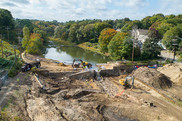
Every year, millions of fish migrate up rivers and streams along the Atlantic coast. But they are often blocked from completing their journeys by barriers such as dams and culverts. Our new story map dynamically highlights how NOAA Fisheries works to reopen these migratory pathways, restoring access to healthy habitat for fish and helping sustain the cultural, ecological, and economic benefits that fisheries provide to communities in the Northeast. Contact: John Catena
|
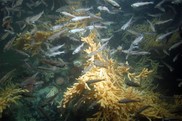
The NOAA Deep Sea Coral Research and Technology Program and partners have just launched a four-year initiative to improve our understanding of deep-sea coral and sponge communities. Corals and sponges are found throughout Alaska’s rich marine waters. However, the full geographic extent of these habitats is still unknown and only a small portion of them have been studied directly. Data gathered from this initiative will aid resource managers in developing and evaluating management options for these valuable ecosystems that support commercially important fish and crab species in the U.S. Contact: Heather Coleman
|
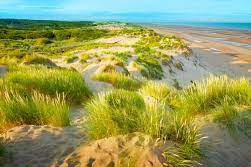
Join the virtual launch event on September 16 at 11:00 AM EST to collectively celebrate the monumental accomplishment and availability of the International Guidelines on Natural and Nature-Based Features (NNBF) for Flood Risk Management which emphasize the role of nature-based solutions and natural infrastructure (e.g. beaches, dunes, islands, marshes) as an alternative to conventional hardened infrastructure to help reduce risks from flooding and coastal storms. The event will be live-streamed on YouTube and the document will be available for download. This is an international partnership effort with Army Corps of Engineers, NOAA, and many others. Contact: Janine Harris
|
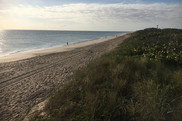
The Deepwater Horizon Open Ocean Trustee Implementation Group marked a milestone in the conservation of sea turtle nesting habitat. In collaboration with state and non-governmental partners they completed the acquisition of a 3.25 acres of high quality habitat connected to other protected areas within the Archie Carr National Wildlife Refuge in Florida. Contact: Laurie Rounds
|
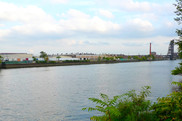
NOAA and the U.S. Fish and Wildlife Service released a final restoration plan that calls for building a 5-acre park along the Lower Passaic River in East Newark, New Jersey. The park will be in a historically underserved area that was impacted by the hazardous substance releases from various industrial facilities in the area. Contact: Rich Takacs
|
|
|
Habitat Across NOAA
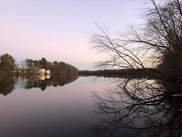
The Merrimack River watershed is the fourth largest in New England, and historically supported great runs of migratory fish. Over the past 200 years, their numbers have dramatically declined, negatively impacting the ecology of the watershed and coastal waters. Along with our partners, NOAA Fisheries has developed a comprehensive management plan for the watershed aimed at restoring these important fish and the habitats on which they rely.
|

NOAA, the United States Geological Survey, and University of California Santa Cruz have released three new reports which quantify the long-term consequences of 2017 Hurricanes Maria and Irma, putting a dollar value on increased flood risk resulting from damage to natural infrastructure. Immediately following the hurricanes, NOAA and partners surveyed the storm damage to coral reefs. The results were used to quantify the increased flood risk to people and property in Florida and Puerto Rico as a result of damage to the reefs.
|
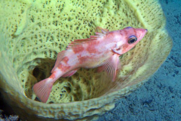
NOAA’s Deep Sea Coral Research and Technology Program and the Alaska Fisheries Science Center are leading a new collaborative project to advance the knowledge of Alaska’s deep-sea sponge and coral ecosystem as part of NOAA’s ongoing Alaska Deep-Sea Coral and Sponge Initiative. The project research team is creating a reference library of sponge species in Alaska by merging traditional taxonomic identification methods with newer genetic approaches. This work will provide information critical for effective management of habitats that support Alaska’s valuable commercial fisheries.
|
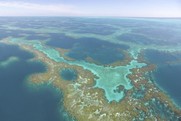
The NOAA Pacific Islands Fisheries Science Center’s Marine Debris Project team and NOAA Marine Debris Program and Office of National Marine Sanctuaries just launched a 30-day removal mission in the Papahānaumokuākea Marine National Monument with support from the non-profit Papahānaumokuākea Marine Debris Project. An estimated 52 metric tons of derelict fishing gear from commercial fisheries all over the Pacific float into the monument every year, and many of these nets become entanglement and ingestion hazards. Heavy nets also put important reef habitats in danger of abrasion and scouring.
|
|
|
Announcements
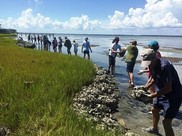
Join us during Restore America’s Estuaries webinar highlighting three NOAA habitat restoration projects in different estuaries around the country on September 22 at 1:00EST to help celebrate National Estuaries Week. We will emphasize our restoration work on different types of habitat, technical assistance with partners, and the long-term, cumulative impacts of these collaborative efforts of the NOAA Restoration Center. Projects will include wetland restoration in the Snohomish Estuary, WA; restoration in the Cape Fear River Estuary in NC; and oyster restoration in the Chesapeake Bay, MD.
|
|
|
|
|